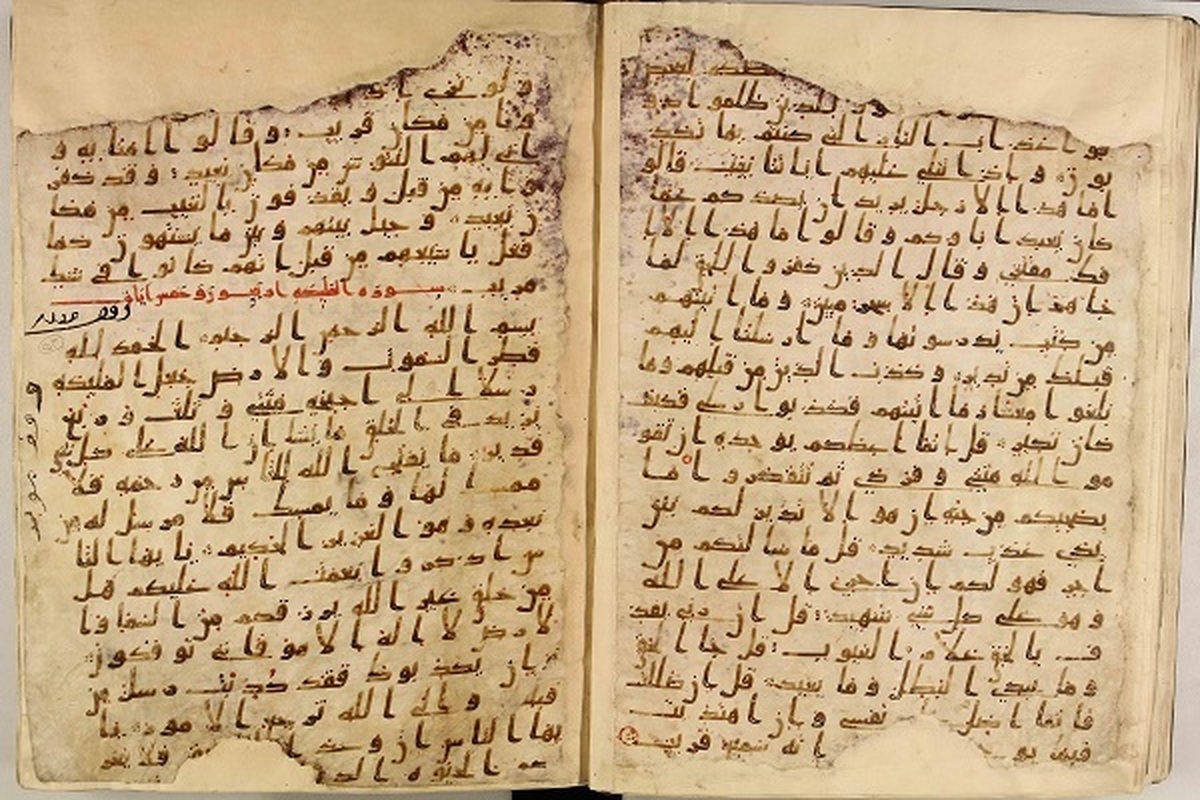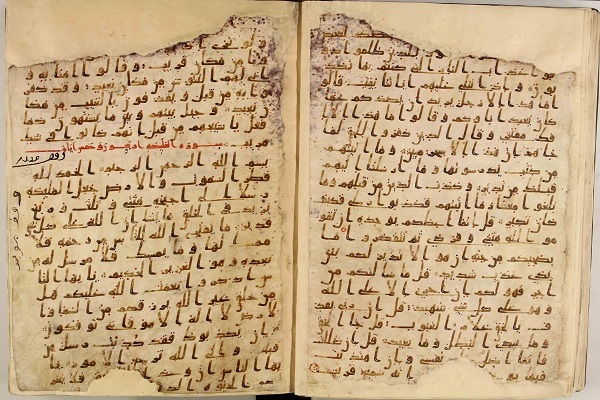Codex Mashhad Unique in At Least Two Respects


“Codex Mashhad is unique in at least two respects. First, it may be the most complete codex from the first Islamic century, as it contains more than 90% of the Quranic text. Second, Codex Mashhad is the only substantial manuscript from the ʿUthmānic text type that seems to have adhered consistently to a non-ʿUthmānic surah arrangement,” Mohsen Goudarzi wrote in an article, which is as follows:
The study of the Quran and its textual history has been a highly active field in the past few decades. Many early manuscripts of the Quran have been either digitized or published in facsimile copies, sometimes together with editions of their texts. While our knowledge of early manuscripts has grown considerably, exceptional finds can still challenge common assumptions and expand our knowledge in exciting new ways. Codex Mashhad, kept at the library of the shrine of Imam Reza (AS) in Iran, is one such find.
For nearly a decade, Dr. Morteza Kariminia has been studying this ancient manuscript using a variety of tools and methodologies. The fruits of his comprehensive research and analysis are now available in an exquisite two-volume work. The first volume presents a facsimile reproduction of Codex Mashhad and a careful edition of its text with copious annotations. The second volume contains a substantial introduction, in both Arabic and English, which discusses Codex Mashhad from the codicological, textual, and historical perspectives. The work on offer is a true scholarly cornucopia.
Written in the so-called Ḥijazī script—and being the only manuscript of this kind in the vertical format in Iran—Codex Mashhad consists of two manuscripts housed at the Āstān-e Qods Library in Mashhad. Having first come across MS 18, which contains nearly the first half of the Quran, Kariminia later discovered the second half of this codex in MS 4116 of the same library. He also discovered a unique feature of this manuscript: although its skeletal text (rasm) conforms to the ʿUthmānic text type, the codex’s original order of surahs differed from that of ʿUthmānic codices. In fact, the original order was so different that a later scribe, writing in the Kufic script, had to perform an extensive cut-and-paste operation and rewrite almost the entirety of the 30th portion in order to make the codex conform to the ʿUthmānic order. Kariminia argues convincingly that the original order must have reflected the arrangement reported for Ibn Masʿūd’s codex, because the eleven surah transitions that the scribe left undisturbed are precisely those that were shared between the ʿUthmānic and Ibn Masʿūdian surah arrangements.
Read More:
Codex Mashhad is unique in at least two respects. First, it may be the most complete codex from the first Islamic century, as it contains more than 90% of the Quranic text. Second, Codex Mashhad is the only substantial manuscript from the ʿUthmānic text type that seems to have adhered consistently to a non-ʿUthmānic surah arrangement. The hybrid nature of this codex raises important questions. Did its original form omit Sūrat al-Fātiḥa or the last two surahs of the Quran, said to have been missing from Ibn Masʿūd’s codex? A broader question poses itself: which features of the Ibn Masʿūd tradition appeared more subversive to the Umayyad authorities, who reportedly tried to suppress that tradition? Was it occasional differences in the skeletal text (as often assumed) or rather its different surah arrangement and the omitted surahs? One’s answer to these questions has bearing on what one thinks about the motivations behind producing this hybrid codex, for which Kariminia provides several plausible hypotheses.
As part of his research on Codex Mashhad, Kariminia had multiple radiocarbon analyses performed in international laboratories, which indicate that the manuscript was produced in the second half of the first century A.H. Paleographic and orthographic features of the codex suggest that it was produced in the earlier half of this window, making it likely a first-century production. Kariminia’s introduction provides tables that conveniently list the distinct textual features of this codex in verse division, orthography, and readings. There are many interesting cases in which Codex Mashhad agrees with some reported practices and variants, though elsewhere it seems to attest to unique readings, scribal practices, or scribal mistakes. Overall, Kariminia’s careful and comprehensive work sets a benchmark for studies of Quranic manuscripts. Both the data he has made available and its analysis are essential for a better understanding of the Quran’s early history and indispensable for future research in the field.
Source: codexmashhad.com



